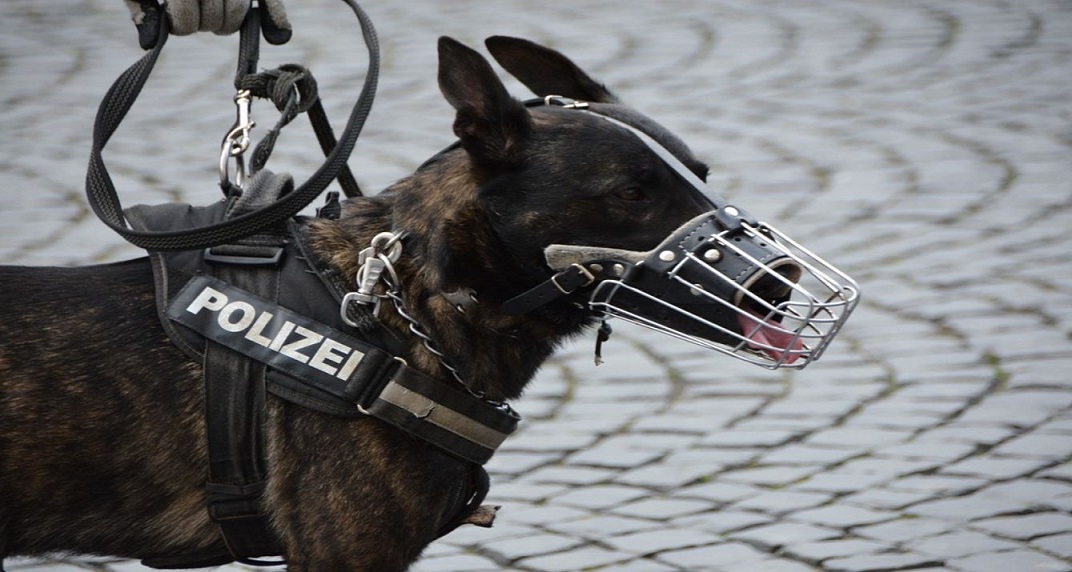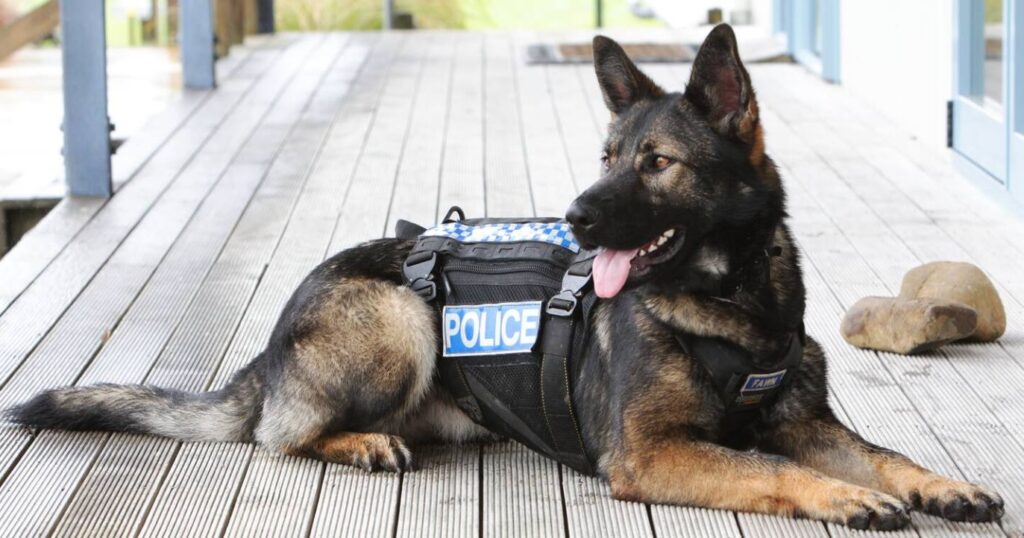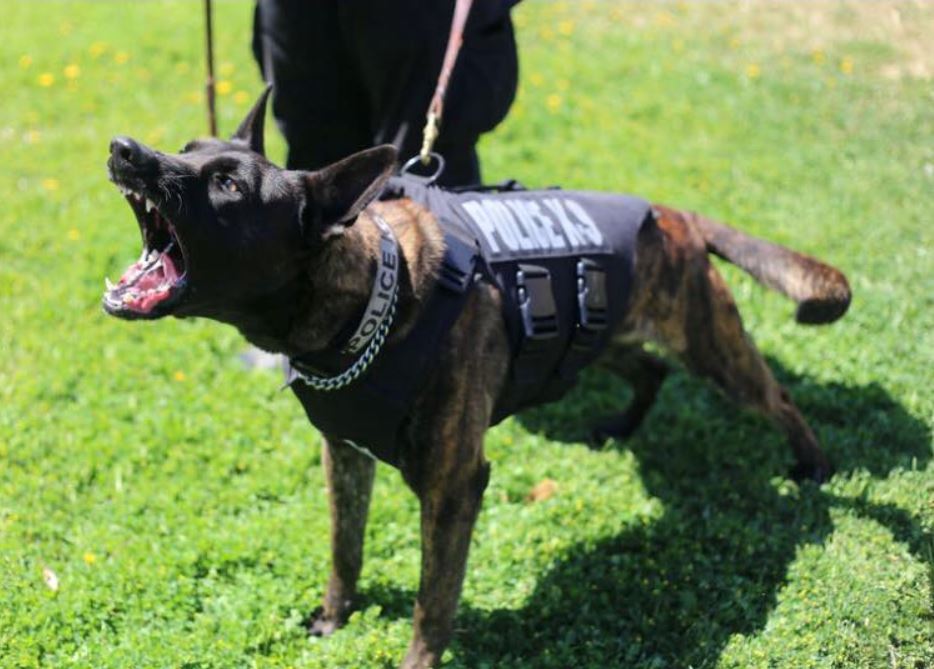Police K9 Dog Training Commands in Different Languages: German, English, French & Dutch

If you’re here, you probably want to know why different languages are used in police dog training and how it impacts the effectiveness of these elite canine units. Maybe you’ve seen a K9 unit in action and wondered why commands are given in German, French, Dutch, or even other languages, rather than just English.
As an experience dog trainer, I can tell you that there’s a lot more to it than just showing off. Let’s unravel how these multilingual commands work, why they’re used, and what makes them so effective in police K9 training.
First of, did you know that research indicates dogs can recognize up to 250 words and phrases, regardless of the language?
Read Also: How to train your dog with bark collar the right way
Canine Commands are Not Just for Show

Police K9 commands are often taught in different languages, with German dog commands, French dog commands, and Dutch dog commands being the most popular. Why? Because it adds an extra layer of precision and control that’s essential in high-stakes situations.
Before we get into the specific police dog commands, let’s talk about why different languages are used in the first place. Well, there are a couple of reasons for using dog commands in different languages:
- Consistency Across Borders: Many police and military dogs are trained internationally, where English might not be the primary language. Using standardized police K9 commands ensures that a dog trained in one country can seamlessly integrate into a team in another.
- Avoiding Confusion: Dogs that are trained using non-English commands are less likely to get confused by common English words they might hear in everyday situations. For example, a dog trained with German dog words like “Fuss” (heel) won’t accidentally respond to someone saying “foot.”
- Enhanced Focus: Using languages like German, French, or Dutch can help keep a dog focused during training and operations. These languages often have sharp, clear sounds that are easy for dogs to distinguish and respond to quickly.
Read Also: How to train your dog with bark collar the right way
German K9 Commands

German is one of the most popular languages for police K9 commands. The language’s crisp, clear pronunciation makes it ideal for delivering commands that are easy for dogs to understand and act on immediately.
Here are some of the most common German K9 commands:
- Sitz: Sit
- Platz: Down
- Bleib: Stay
- Hier: Come
- Fuss: Heel
- Fass: Attack
- Aus: Let go/release
These German police dog commands are not just about obedience; they’re designed to be clear and authoritative, ensuring the dog understands exactly what’s expected in any situation. So, next time you see a K9 in action, listen closely – you might just catch a few of these commands being used.
French Dog Commands

French is another popular language for K9 commands, especially in countries where French is widely spoken or in specific police units that prefer it for its precision and elegance. French dog commands are similar to their German counterparts in terms of being clear and direct, which is crucial in the heat of the moment.
Here are some key French dog commands:
- Assis: Sit
- Couché: Down
- Reste: Stay
- Viens: Come
- Au pied: Heel
- Attaque: Attack
- Lâche: Let go/release
The beauty of French dog commands lies in their rhythmic flow, which can be both soothing and commanding to a well-trained dog. French-speaking handlers often choose these commands to maintain consistency with their language and to leverage the natural authority of the French tongue.
Dutch K9 Commands

Dutch is less common than German or French but is still used in many European K9 units, especially in the Netherlands and Belgium. The Dutch language offers sharp, clear commands that can be easily understood by dogs. Dog commands in Dutch are favored for their brevity and the ease with which they can be articulated during fast-paced situations.
Here are some essential Dutch dog commands:
- Zit: Sit
- Af: Down
- Blijf: Stay
- Hier: Come
- Volg: Heel
- Pak: Attack
- Los: Let go/release
The consistency of these Dutch dog commands can be particularly effective for handlers who speak the language fluently or for units operating in Dutch-speaking regions. The commands are designed to be sharp and to the point, ensuring the dog’s quick and accurate response.
English Dog Commands

While German, French, and Dutch are popular, police K9 commands are also commonly given in English, especially in English-speaking countries. English commands are straightforward and often used in training environments where the handler and dog are both native English speakers.
Some common police commands for dogs in English include:
- Sit: Sit
- Down: Lie down
- Stay: Remain in position
- Come: Return to the handler
- Heel: Walk beside the handler
- Attack: Engage the target
- Release: Let go/release
K9 commands in English are particularly useful in environments where multiple languages are in play, ensuring that the dog’s training is understood by all team members.
The Importance of Consistency in K9 Training
Regardless of the language used, the key to successful K9 training is consistency. Dogs rely on clear, consistent canine commands to perform their duties effectively. This is why it’s essential for handlers to stick to the same language and command structure throughout the dog’s training and operational life.
Switching between languages or using commands interchangeably can confuse the dog, leading to mistakes that could be costly in critical situations. Whether you’re using German dog words, French dog commands, or dog commands in Dutch, make sure you’re consistent in your approach.
Conclusion
At the end of the day, the choice of language for police dog commands often comes down to tradition, handler preference, and the dog’s training history. What’s important is that these dog commands in different languages are applied consistently, ensuring that these incredible animals can perform their duties with precision and reliability.
So next time you see a K9 unit in action, you’ll know that behind every “Platz” or “Assis” is a well-trained dog ready to serve and protect.
Want to know more? Read our detailed guide on how police K9s are trained to respond to commands in different languages.
Read related posts about





